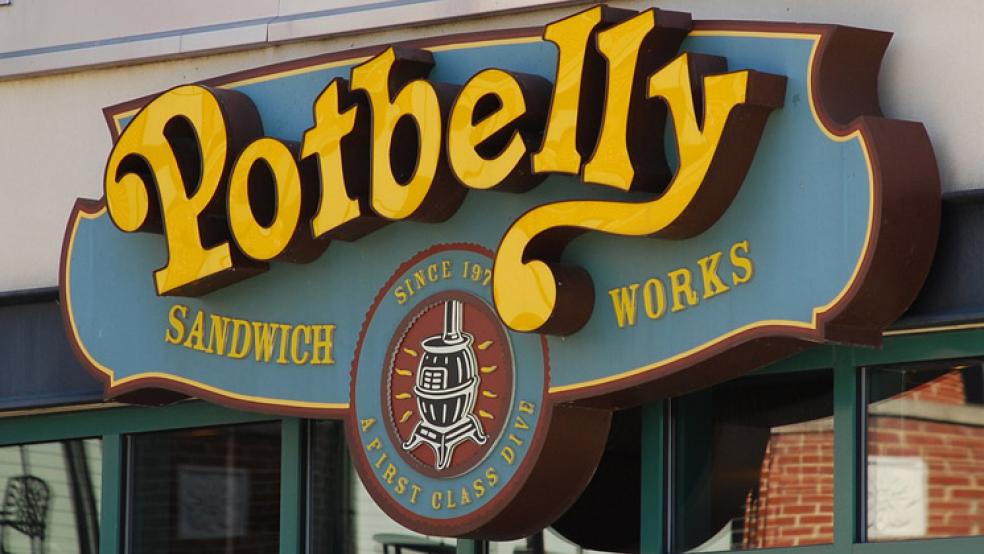Yum, yum, yum. Investors seem to have developed a seemingly bottomless appetite for shares of casual dining restaurants based on the recent performance of IPOs from Potbelly (Nasdaq: PBPB) and Noodles & Co. (Nasdaq: NDLS). The initial stock offerings of grocery chains like Sprouts Farmers Market (Nasdaq: SFM) and, earlier this year, Fairway Group Holdings (Nasdaq: FWM) have also been snapped up hungrily. The only question that remains is whether they’ll end up suffering from indigestion after cramming their portfolios full of these shares.
PHOTO GALLERY: STOCK MARKET MUNCHIES: 12 SWEET FOOD IPOS
Why would I want to rain on this particular parade, you might ask? After all, these are solid businesses, sometimes with long-established track records. That’s certainly true of Potbelly, a sandwich chain that, founded in 1977, probably is older than many of the investment bankers that put together its IPO. And these are companies that, in contrast to the likes of Twitter, not only have business models that make it clear just how they generate profits, but are already producing those profits. (In Potbelly’s case, they amounted to $31.5 million in 2012 and $16.2 million in the first half of 2013.)
What is remarkable, however, is how much investors are willing to pay for those profits. After Potbelly’s IPO was priced at $14, above the initial target of $10 a share, the stock still soared 120 percent to close its first day of trading at $30.77. By some estimates, that means investors feel quite comfortable paying the equivalent of about $200 for every dollar of earnings that the company is generating.
RELATED: IS BUYING ORGANIC FOOD WORTH THE EXTRA COST?
Noodles & Co. is another well-established business (founded in 1995), designed to appeal to the nation’s horde of carbohydrate addicts with their eponymous dishes, and offering amenities that many so-called fast dining chains don’t, from china dishes to employees who offer to refill coffee cups so their customers don’t have to. Profits at Noodles & Co. grew 61 percent in 2011 and 34.8 percent last year. But if you bought the stock, you’d be paying $300 to $400 for every dollar of earnings. (As with any price/earnings ratio calculation, the actual number depends on what earnings figure you use: historical earnings, a calendar year, a trailing 12-month period, etc.)
Let’s be clear: These are lavish valuations for companies whose business is preparing and dishing up such mundane fare as sandwiches and stir-fried noodles. For some context, let’s look at the valuation of Starbucks (Nasdaq: SBUX) – which, whatever you think of the caliber of its coffee, can be said to have popularized the idea of the barista and custom-brewed java and thus transformed the American urban experience. If you glance back over the company’s history, there are only a couple of times that Starbucks’s P/E ratio has topped 100, most recently when its earnings faltered during the last recession.
Some might contend that I’m understating the power of a brand. No, I’m not. Here I’ll defer to investment manager Jeffrey Gundlach, who honed his skeptical instincts as a bond market investor. “A gourmet burrito is an oxymoron,” the exasperated Gundlach told listeners at last May’s Ira Sohn conference (a showcase for hedge fund managers to pitch their best long and short ideas). Gundlach, explaining his bearish view on Chipotle Mexican Grill (NYSE: CMG), argued that “all you need to compete with its core business is a taco truck.”
And the business of taco trucks – and other food trucks – is booming. Recent research by London-based Companies and Markets suggests that “street food” as a whole – a segment of the market made up almost exclusively of food trucks – is now worth $11.6 billion in the United States and has outperformed the traditional fast dining establishments. These are low-cost businesses to launch and operate, often run by savvy entrepreneurs who use social networking to spread the word about where they’ll be parked this lunch hour. (In many cities, you can track your favorites on Twitter.)
Even if the consumer fascination with this phenomenon fades and the hectic recent growth rates subsides, as Companies and Markets predicts, food trucks will remain a source of competition for the likes of Chipotle Mexican Grill and Potbelly. A recent study by NPD, a market research firm in Port Washington, NY, found that customers who purchased meals from food trucks said they would otherwise have dropped by at a fast food chain or quick dining restaurant like Chipotle. And food truck menus – heavy on Mexican food, sandwiches, soups, Korean or Chinese dumplings and noodle items – tend to compete directly with this universe of offerings from Potbelly and its quick service kin. So-called fast casual dining may be growing far more rapidly than restaurant chains as a whole, but it’s also a business with a relatively low competitive moat and an entirely new source of competition.
None of this suggests that Potbelly, Noodles & Co. and their peers are doomed. But, IPO fever aside, the odds that new fast casual restaurant chains will be able to replicate the performance of Chipotle Mexican Grill (up 54 percent in the last year; 141.8 percent in the last three years) aren’t all that impressive. For quite a while, Chipotle was one of the only ways investors could play this business directly, along with Panera Bread (Nasdaq: PNRA). The ranks have now doubled, and rumors are rife of more IPOs (Cheddar’s Casual Café is one name that gets tossed around a lot) from within the sector.
FOOD STAMP FIGHT: WHY PANERA CEO IS EATING ON $4.50 A DAY
As an IPO candidate, Twitter has its own issues. But it’s not offering a commoditized product in an increasingly crowded market, and when it goes public it will be one of a kind (despite the frequent comparisons to Facebook.) In contrast, you might want to ponder the references in Noodles & Co’s IPO filing that the SEC had to insist it remove, citing its “luxurious dishes,” “excellent service” and “surprisingly friendly people.” Whenever the first draft of an S-1 filing starts sounding eerily like an advertisement, and the stock itself is trading at hundreds of times its earnings, it might be time to step away from the table.




